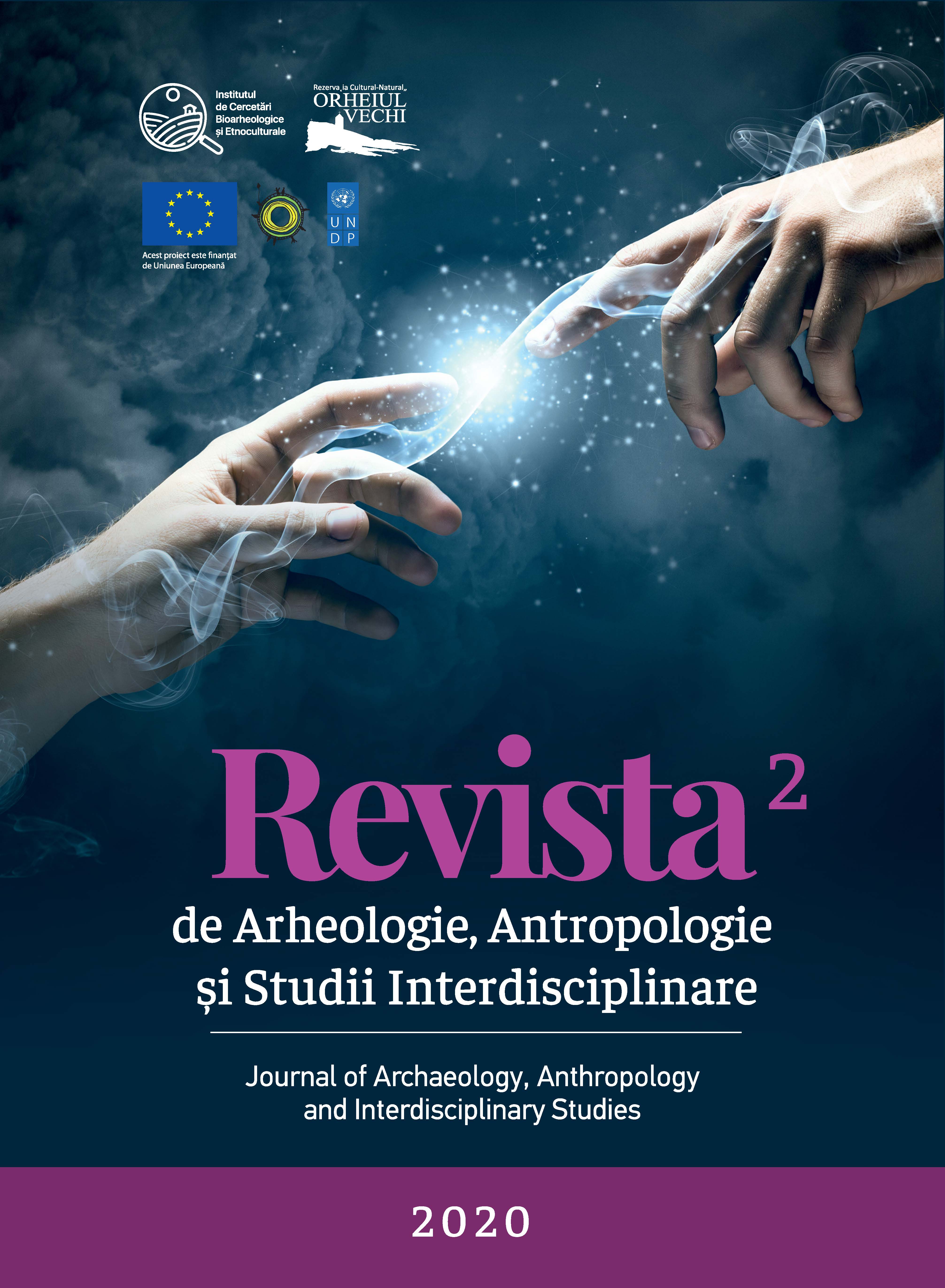Скифская гробница с мечом типа Солоха на Нижнем Днестре
Scythian tomb with the sword of the Solokha type in the Lower Dniester region
Author(s): Vitalii S. Sinika, Sergey D. Lysenko, Sergey N. Razumov, Nicolai P. TelnovSubject(s): Archaeology
Published by: Bons Offices – Casa Editorial-Poligrafică
Keywords: left bank of the Lower Dniester; Scythians; tomb; sword of the Solokha type; amphorae; second half of the 4th century BC;
Summary/Abstract: The article presents and analyzes unpublished materials obtained during the study of the barrow 16 of the “Vodovod” group near Glinoe village, Slobodzeya district, on the left bank of the Lower Dniester. The construction of its second mound is connected with two simultaneous Scythian graves. The high social status of the persons from the tomb of Glinoe/“Vodovod” 16/1 is shown, firstly, by the man-hours required by the burial structure. The published tomb surpasses all similar ones investigated so far in the North-West Black Sea region by its size and volume of the funerary pit. Secondly, the main feature of the mound was accompanied by the burial of a dependent person. It was located at the site of the only break in the circular mainland ejecta that surrounded the tomb. The orientation of the dependent person is perpendicular to the orientation of the owners from the main grave. An extraordinary grave inventory was found in the tomb, despite a thorough robbery. The inventory consisted of a sword with claw-like pommel and triangular hilt (of the Solokha type), a spearhead inlaid with bronze wire in the lower part of the hub, 12 Greek amphorae and 40 burnt pebbles. The sword is of particular interest among the weapons. The closest analogy to it is an item from a Sarmatian barrow of the 4th century BC near Solodovka village in the Volga region. Only two similar finds were known in the North-West Black Sea region until recently. They were discovered in burials from the turn of the 5th – 4th centuries BC, Talmaz 9/1 and Purkari 7/3. Both of these graves were studied on the right bank of the Lower Dniester. At the moment, the number of such swords in the region is complemented not only by the find of a real sword from the grave of two adults (Glinoe/“Vodovod” 16/11), published in this work, but also a miniature model of a similar sword found in the children’s burial Glinoe/“Vodovod” 16/10. A pair of spears does not look like a surprising find in any of the warriors’ burials of the North Black Sea region. However, the inlay of the lower part of the hub of one of the spearheads with bronze wire, as well as the presence of a bronze ring at the base of the second one, do not find analogies in the Scythian antiquities. It is very likely that an iron finial found in a Scythian tomb served to tighten the case that covered one or both of the spearheads. 12 amphorae from the tomb allow us to state that the largest set of amphora containers among all the Scythian burials of the North-West Black Sea region was placed in this grave. Of the tools, the most interesting is a knife, on the back of which there is a thickening or rib. There are currently 12 known knives of this kind, and all of them come from the “Sad” and “Vodovod” barrow groups investigated near the Glinoe village, Slobodzeya district, on the left bank of the Lower Dniester. The finding of 40 burnt pebbles in the tomb is an extraordinary phenomenon for the Scythian burials in the North-West Black Sea region. Undoubtedly, they were used as heating elements during the fumigation ceremony. Their number, taking into account the fact that the tomb was plundered, can be compared only with the discovery of 75 “sling” stones in the Krasny Podol 2/2 grave in the Lower Dnieper region. The mirror from the tomb is extremely unusual. Its edge is T-shaped. Until now, there were no such items in the Scythian burials of the North-West Black Sea region. Five arrowheads in non-standard positions, a fragment of ceramics, and fire flint along with pieces of crystalline gypsum were found in the grave of the dependent person marked Glinoe/“Vodovod” 16/11. The non-standard placement of the arrowheads reflects certain “ethnographic” features of the rite. Fire flint expands the list of similar finds in the Scythian features of the North Black Sea region. The discovery of crystalline gypsum near the fire flint suggests that this substance was intended for fumigation of the burial structure. The time of the construction of the second mound of the Glinoe/“Vodovod” 16 barrow is determined, based on a set of Heraclea and Sinope stamps, at the beginning of the second half of the 4th century BC.
Journal: Revista de Arheologie, Antropologie și Studii Interdisciplinare
- Issue Year: 2/2020
- Issue No: 1
- Page Range: 165-202
- Page Count: 38
- Language: Russian

